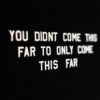Hiring is set to increase in the coming year, but human resource (HR) funding is expected to stay the same. Unsurprisingly, this trend is likely to force HRs to “do more with less,” according to Paul Petrone from VoiceGlance, writing on Business2Community.
He believes that the cost-of-hire shouldn’t be a priority concern for recruiters. It is more important to measure the quality-of-hire, because this will make the overall difference in a company’s profits and performance. Nevertheless, hiring costs are still a concern that will require HR professionals to boost their output with limited resources. Although this sounds challenging, it is possible to achieve, Petrone stated.
The first thing that HRs must do is to focus on force multipliers, as tight budgets make increasing HR staff impossible. Thus, the only way to boost outputs is to make current employees more efficient. The most appropriate way to do this is by adopting technologies that make efforts more productive, advises Petrone.
A good idea is to use software able to perform screening interviews on behalf of recruiters. In this manner, a talent seeker can distribute interviews which will be received by all applicants. Then HR can simply assess the answers, and if the answers are transcribed or recorded on a complete log, the information can be directly delivered to the relevant department.
If such methods are not used, time limitations will become a burden for the HR team, Petrone said. Recruiters might only interview ten candidates before selecting one, rather than considering the whole pool of applicants. Additional interviews, time spent making phone calls that don’t get answered, and the possible loss of notes that have been taken, slow down the process even further.
Although technologies improve efficiency, recruiters are likely to face resistance in the process of such adoption, which can come from both internal and external sources, Petrone warns. Inbound resistance can be a result of employees’ perceptions that the new methods will make their functions dispensable. And although this is somewhat true, there is an upside to it: recruiters will now have more time to spend on strategic and high-priority tasks.
External resistance is also something to keep in mind. However, Petrone believes that this issue is unlikely to be paramount. Even though adopting new software is commonly associated with additional costs, good leaders are expected to support such efficiency solutions. This is especially true in cases where new software enables employees to focus on their priorities.
Petrone concludes that boosting output is almost impossible without changes to either the number of HR employees, or the tools that they are given. HR departments are currently in a state that requires more technological solutions, such as VoiceGlance. Otherwise, the high employment targets will stress and overwork recruiters, Petrone said.
How do you feel about software being used to handle the interview process? Can it be more (or less) effective than human interaction?
To see our latest B2B marketing and creative jobs please click here for more information.









